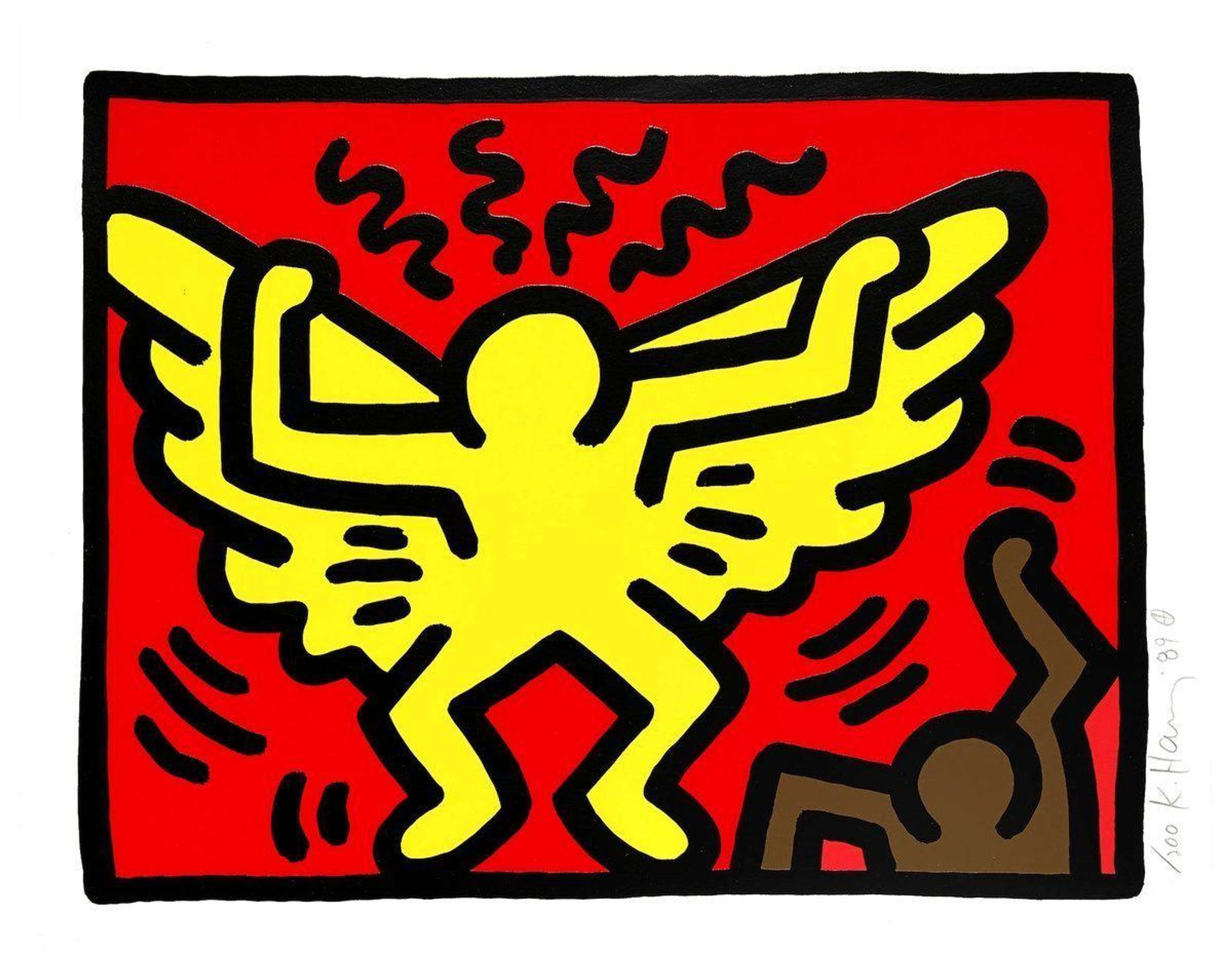
Pop Shop IV, Plate I

Pop Shop IV, Plate I
Signed Print
Keith Haring
£26,000-£40,000
$50,000-$80,000 Value Indicator
$50,000-$70,000 Value Indicator
¥250,000-¥390,000 Value Indicator
€30,000-€45,000 Value Indicator
$270,000-$420,000 Value Indicator
¥5,160,000-¥7,950,000 Value Indicator
$35,000-$50,000 Value Indicator
There aren't enough data points on this work for a comprehensive result. Please speak to a specialist by making an enquiry.
34 x 42cm, Edition of 200, Screenprint
Auction Results

Track auction value trend
Meaning & Analysis
Pop Shop IV, Plate I is one of four screen prints in Keith Haring's fourth Pop Shop series. Released in 1989 in an edition of 200, this print features Haring's iconic winged angel and androgynous figure. Thick, black movement lines emanate from the figures, bringing a sense of energy to the print.
Perhaps the most recognisable prints in the Pop Shop series, Pop Shop IV features almost all of Haring’s ‘icons’: the radiant child, the barking dog and the winged superman, all surrounded by joyous energy lines and depicted in the bold contrasting colours he became known for. This series is a tour de force of composition, displaying Haring’s intimate knowledge of the language of cartoons and street art alike, and evoking the playfulness that characterised all the work he made for his Pop Shops.
The first Pop Shop opened in 1986 in Manhattan’s SoHo neighbourhood and featured murals painted by the artist as well as badges, t-shirts and more from as little as 50 cents. While the project was praised by friends such as Andy Warhol, who was fascinated by the possibilities of the work of art in the age of mechanical reproduction, it was snubbed by many leading art world figures who placed more value on original works of art. Speaking of the importance of opening the shop as opposed to making large canvases to please collectors, Haring said, “I could earn more money if I just painted a few things and jacked up the price. My shop is an extension of what I was doing in the subway stations, breaking down the barriers between high and low art”.
Printed in four colours – black, red, brown and yellow – this work shows Haring’s mastery of screen printing as a medium. Though he had experimented with print techniques such as lithography in the late 70s and 80s it wasn’t until 1983 that Haring began making screen prints, or serigraphs, which offered a way of creating multiple images, that artists had adopted from the world of commercial printing. This move to screen printing was undoubtedly due in part to the method being popularised by Warhol, one of Haring’s most important influences, and soon he was producing ever more inventive and daring work.
It soon became evident that the energy and curiosity he demonstrated for painting translated perfectly into printmaking and he began to work with publishers across the US, Switzerland, Japan, Germany, France, Denmark and Holland. The prints featuring singular images were released as portfolios of four, each from an edition of 200, while the Quad prints— compiling four images in a grid format— were released in an edition of 75. Totalling 875 prints featuring the brown-yellow-red Pop Shop IV artworks and exemplifying the prolific productivity of Haring’s printmaking, each individual print nevertheless reflects the attentive care paid by Haring throughout the production process. Though initially the singular Pop Shop IV prints were released as four-part portfolios (and remain extremely valuable in their original sets of matching edition numbers) many portfolios have inevitably been divided.
By the time of his death, Haring had produced so many prints that the exact number has become impossible to count. There are many unsigned editions on the market, though these tend only to be considered valuable if approved by the Keith Haring Foundation. Today his prints are frequently among the most sought after multiples on the market.